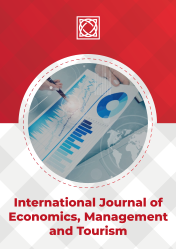APPLICATION OF THE AGGLOMERATIVE CLUSTERING PROCEDURE FOR ASSESSING THE CIRCULARITY OF THE EUROPEAN UNION COUNTRIES
DOI:
https://doi.org/10.46763/IJEMT244209rKeywords:
Circular economi, European Union, cluster anaysis, agglomerative procedure, indicatorsAbstract
The circular economy represents a regenerative concept of the functioning of the economy and society, which aims at a more efficient allocation of resources and their use with the application of the principles of recycling and reducing the rate of waste generation to protect the environment. At the same time, the circular economy transforms and absorbs the existing industrial waste generation to create energy that encourages the further sustainable development of industrial ecosystems by directing processes to improve general business conditions. The primary methodological framework of this research is based on the selection of circular economy indicators and their performance at the level of the European Union for the five years 2017-2021, based on the latest available data from the Eurostat Database. By analyzing the five-year average values of circular economy indicators, using hierarchical cluster analysis using the agglomerative procedure, the European Union members are grouped by similarity into six clusters. Descriptive statistics within a cluster can determine the dominance of a particular cluster and progress in the area of the circular economy. Based on the results obtained, the most significant progress in circular performance was achieved by Croatia, Estonia and Latvia.

